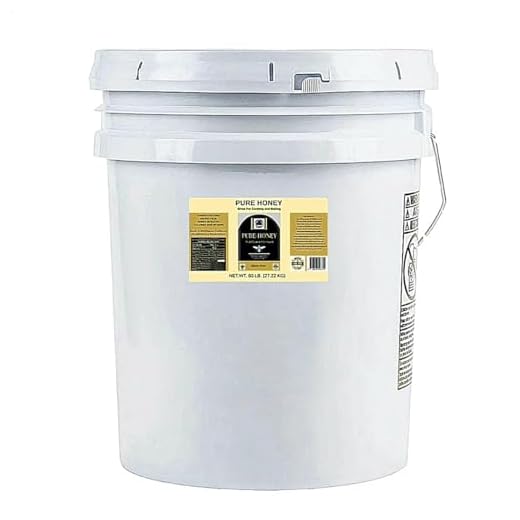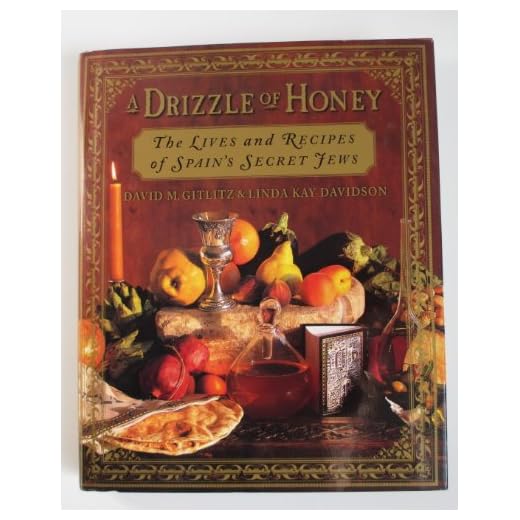



When it comes to cooking with a cast iron skillet, there are countless possibilities. From searing steaks to baking bread, this versatile kitchen tool can handle it all. But what about cooking honey? Can you put honey in a cast iron skillet and cook it?
The short answer is no. Honey is a natural sweetener that is best enjoyed in its raw state. When honey is exposed to heat, it undergoes a chemical change that alters its taste and nutritional properties. This is why it is recommended to never cook honey, whether in a cast iron skillet or any other cooking vessel.
But why is cooking honey a bad idea? When honey is heated, its sugars can caramelize and even burn, resulting in a bitter taste. Additionally, the high heat can destroy the beneficial enzymes and antioxidants that make honey a healthy choice.
So, if you want to enjoy the natural sweetness and health benefits of honey, it’s best to consume it in its raw form. Drizzle it over your favorite foods, use it as a sweetener in your tea or coffee, or add it to your homemade salad dressings. Just remember to keep your cast iron skillet reserved for other delicious dishes!
Understanding The Science Behind Cooking Honey On A Cast Iron Skillet
Cooking honey on a cast iron skillet is a fascinating process that involves a delicate balance of temperature and chemical reactions. The cast iron skillet, known for its excellent heat retention and distribution properties, plays a crucial role in achieving the desired results.
When honey is heated, its composition undergoes various changes due to the breakdown of sugars and other compounds present in it. The heat from the cast iron skillet causes the honey to caramelize and develop a richer, deeper flavor profile.
| Temperature | Chemical Reactions |
|---|---|
| 110-130°C (230-266°F) | Honey begins to lose moisture and thins out. |
| 140-160°C (284-320°F) | Honey starts to darken and caramelize, giving it a distinct flavor. |
| 170-190°C (338-374°F) | Honey reaches a deep caramelization stage and develops a more intense flavor. |
It’s important to note that while the cast iron skillet allows for even heat distribution, controlling the temperature is crucial to prevent overheating and burning the honey. The low thermal conductivity of cast iron means that it retains heat well, and adjusting the heat source promptly is essential.
Cooking honey on a cast iron skillet can also enhance its nutritional benefits. Heating honey can increase its antioxidant properties, making it a healthier option than raw honey in some cases. However, excessive heat can destroy some of the beneficial compounds, so it’s essential to use moderate temperatures.
In conclusion, cooking honey on a cast iron skillet requires a delicate balance of temperature control and understanding of the chemical reactions involved. The cast iron skillet’s properties contribute to the caramelization process, resulting in a richer, deeper flavor. By following proper heat management, you can enjoy the unique taste and potential health benefits of cooked honey.
Benefits of Cooking Honey on a Cast Iron Skillet
When it comes to cooking with honey, using a cast iron skillet can provide several benefits. Here are a few reasons why cooking honey on a cast iron skillet is a great idea:
1. Enhanced Flavors
Using a cast iron skillet to cook honey can help enhance its natural flavors. The even heat distribution of cast iron allows the honey to caramelize evenly, resulting in a rich and deep flavor. The heat also helps to unlock the natural sweetness of the honey, creating a delicious and complex taste.
2. Retains Nutritional Value
Unlike other cooking methods that may cause loss of nutrients, cooking honey on a cast iron skillet helps retain its nutritional value. The high heat of the skillet helps to break down any impurities in the honey while preserving its natural enzymes and antioxidants. This means that you can enjoy the health benefits of honey even after it has been cooked.
Cooking honey on a cast iron skillet can also help improve its texture. The heat from the skillet produces a slight caramelization, giving the honey a smoother and silkier consistency.
3. Versatility
A cast iron skillet is a versatile cooking tool, and it can be used for various recipes involving honey. From drizzling honey over pancakes or waffles to using it as a glaze for meat or vegetables, a cast iron skillet allows you to experiment with different cooking techniques to bring out the best flavors in the honey.
Overall, cooking honey on a cast iron skillet not only enhances its flavors but also helps retain its nutritional value and improves its texture. So, next time you reach for that jar of honey, consider pulling out your cast iron skillet for a delicious and healthy cooking experience.
Best Practices for Cooking Honey On A Cast Iron Skillet
When it comes to cooking honey on a cast iron skillet, it’s important to follow a few best practices to ensure the best results. Cast iron skillets are known for their heat retention and even heat distribution, which makes them a great choice for cooking honey. Here are some tips to keep in mind:
Choose a High-Quality Cast Iron Skillet
Start by selecting a high-quality cast iron skillet. Look for a skillet that is well-seasoned and free from any cracks or damage. A well-seasoned skillet will have a smooth, non-stick surface, which will help prevent the honey from sticking to the pan.
Preheat the Skillet
Before cooking honey on a cast iron skillet, it’s important to preheat the skillet properly. Place the skillet on the stove over medium heat and allow it to heat up for a few minutes. This will help ensure even heat distribution and prevent the honey from burning.
Caution: Be sure to handle the hot skillet with oven mitts or a heat-resistant glove to avoid burns.
Once the skillet is preheated, you can add the honey to the pan. It’s important to note that honey can quickly burn, so keep a close eye on it as it heats up.
Use Low to Medium Heat
When cooking honey on a cast iron skillet, it’s best to use low to medium heat. This will help prevent the honey from burning and caramelizing too quickly. Stir the honey constantly as it heats up to ensure even cooking and prevent any hot spots.
Remove the Honey from Heat Promptly
Once the honey has reached the desired consistency, remove it from the heat promptly. If left on the heat for too long, the honey can become overly caramelized and develop a burnt taste.
Remember: The residual heat from the cast iron skillet will continue to cook the honey even after it has been removed from the heat, so it’s important to act quickly.
By following these best practices, you can enjoy perfectly cooked honey on a cast iron skillet. Remember to exercise caution when handling hot skillets and always stay attentive while cooking to achieve the best results.
FAQ
Can you cook honey on a cast iron skillet?
Yes, you can cook honey on a cast iron skillet. However, it is important to be cautious as the high heat can cause the honey to caramelize quickly and potentially burn.
What are some recipes that involve cooking honey on a cast iron skillet?
There are several recipes that involve cooking honey on a cast iron skillet. Some popular options include honey-glazed vegetables, honey-roasted chicken, and honey-baked ham. These recipes typically involve coating the ingredients in honey before cooking them in the skillet.








